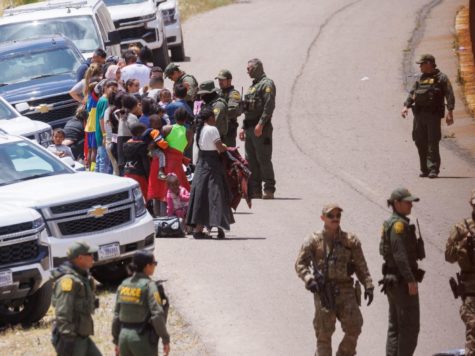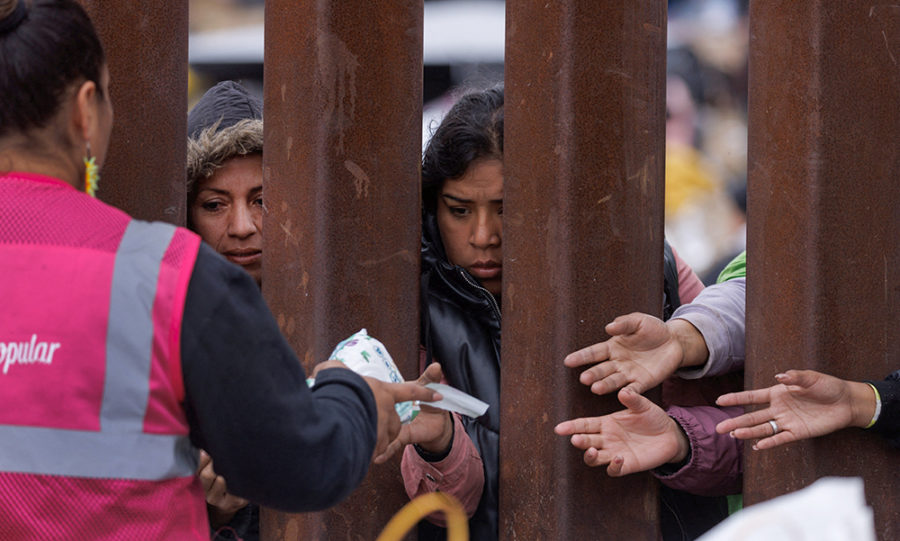Title 42 Expires
What Happens Next?
Migrants reach through the wall at the U.S.-Mexico border for supplies (thetablet.org)
May 18, 2023
 The expiration of a pandemic-era public health restriction that will significantly alter several years of US immigration policy has arrived, threatening chaos as an estimated tens of thousands of migrants mass near the US-Mexico border in anticipation.
The expiration of a pandemic-era public health restriction that will significantly alter several years of US immigration policy has arrived, threatening chaos as an estimated tens of thousands of migrants mass near the US-Mexico border in anticipation.
Title 42 was created to address public health and social welfare and grants the government the ability to take emergency action in numerous ways, including to “stop the introduction of communicable diseases.” While the code has been in place for decades, it was used widely beginning in March 2020 by the administration of then-President Donald Trump in order to regulate border crossings under the premise of increased COVID-19 precautions, according to PBS.
Title 42 allowed border authorities to swiftly turn away migrants encountered at the US-Mexico border, often depriving migrants of the chance to claim asylum and dramatically cutting down on border processing time. But Title 42 also carried almost no legal consequences for migrants crossing, meaning if they were pushed back, they could try to cross again multiple times.
Now that Title 42 has been lifted, the US government is returning to a decades-old section of US code known as Title 8, which Homeland Security Secretary Alejandro Mayorkas has warned would carry “more severe” consequences for migrants found to be entering the country without a legal basis, according to CNN.
Migrants who were processed under Title 42 were not allowed to request asylum. They were quickly processed and expelled from the U.S., typically by being turned back to Mexico. In more limited cases, they were flown to their home countries.
Unlike formal deportations under Title 8, expulsions under Title 42 did not impose immigration or criminal consequences on migrants, meaning those expelled to Mexico could repeatedly try to cross the border. Under Title 8, migrants who are deported are banned from entering the U.S. for at least five years. And if they reenter the U.S. unlawfully, they could face charges and jail time.
While Title 42 prevented many from seeking asylum, it carried no legal consequences, encouraging repeat attempts. After Thursday, migrants face being barred from entering the U.S. for five years and possible criminal prosecution.
Holding facilities along the border already were far beyond capacity. But late Thursday, U.S. District Judge T. Kent Wetherell, an appointee of President Donald Trump, halted the administration’s plan to begin releasing migrants with notices to report to an immigration office in 60 days when holding centers reach 125% capacity, or where people are held an average of 60 hours. The quick releases were to also be triggered when authorities stop 7,000 migrants along the border in a day.
The state of Florida argued the administration’s plan was nearly identical to another Biden policy previously voided in federal court. Earlier Thursday, the Justice Department said its new move was a response to an emergency and being prevented from carrying it out “could overwhelm the border and raise serious health and safety risks to noncitizens and immigration officials.”
Weatherell blocked the releases for two weeks and scheduled a May 19 hearing on whether to extend his order, according to HuffPost.



